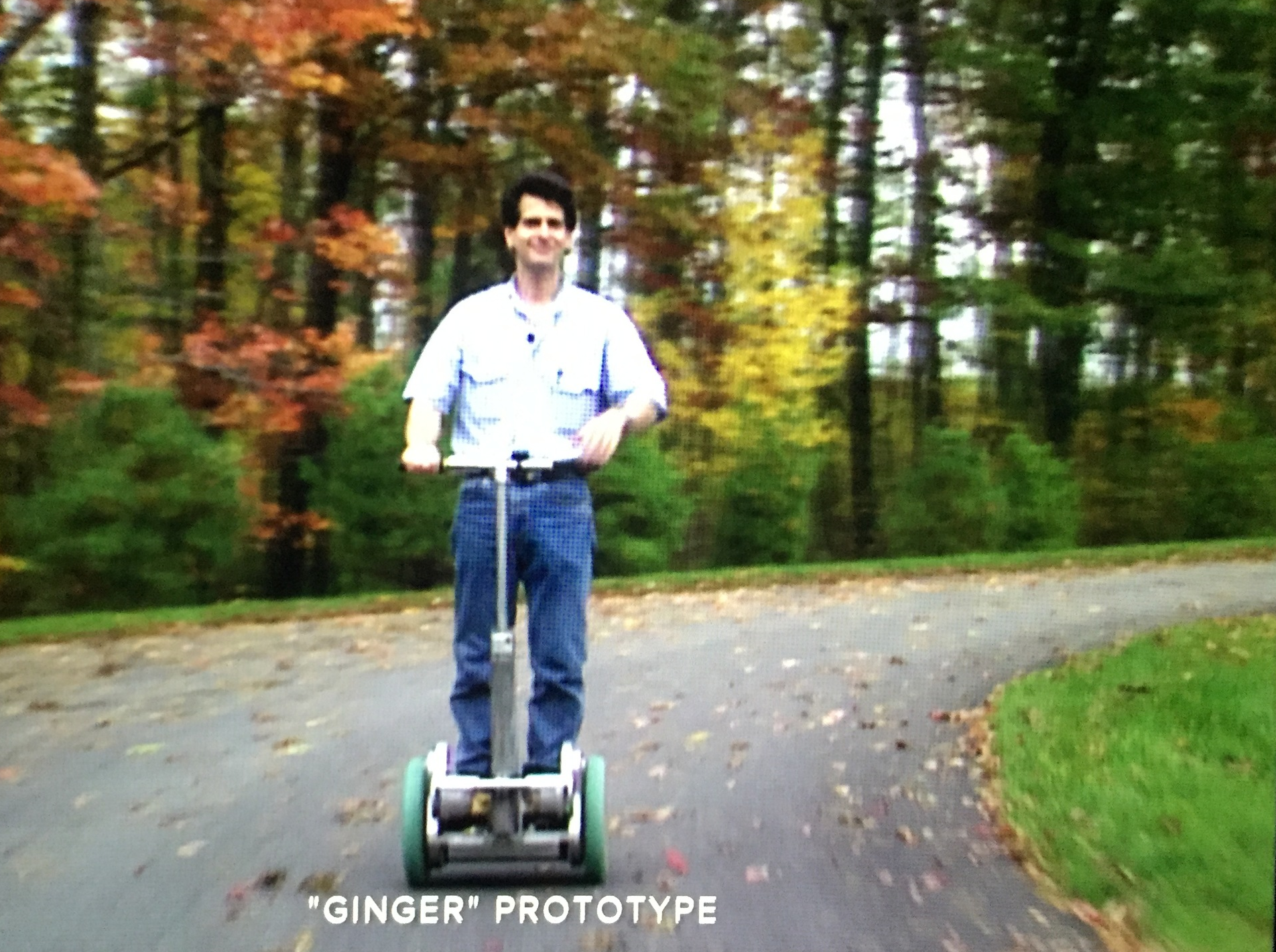The Hovering Genius
The other night, I watched SlingShot, a documentary about Segway inventor Dean Kamen. Despite some withering reviews (this one from the LA TImes is pretty spot-on), I was curious about Kamen ever since reading a profile of him a couple of years ago. Now a self-made millionaire, he has invented dozens of medical devices, a self-balancing wheelchair, and is now working on the SlingShot, an off-grid water-purification plant.
The film, hagiographic and stiff, paints Kamen as a lone, eccentric genius in the mold of Henry Ford, Thomas Edison, or Nikola Tesla. He is a lifelong bachelor (confirmed by an interview with his sweet, elderly parents), too married to his work to have time for a family. He pilots a helicopter from his house to his downtown research lab. He wears identical clothes everyday -- Jay Leno-esque head-to-toes denim. The list of genius tropes goes on, building Kamen up to the task of taking on the world's biggest problem: clean water.
Screenshot of Kamen riding the first Segway prototype.
Kamen's SlingShot is a vapor compression distiller: it evaporates water into steam, further heats it through compression, then condenses it into cool water with a heat exchanger. It is extremely energy efficient, and can be run of any solid fuel with the help of a Stirling engine. If he could bring them to scale (Less than $1,000 each), the SlingShots could be a life-changing resource. It is an incredible piece of technology, hand-machined in Boston and field tested all over the world.
However, from the outside, the SlingShot is a cipher. Inside, it's incomprehensible, straining against every principle of appropriate design. The engineering process, much like development of the Segway, took place in secret. The intellectual property is locked up in patents. There is no way to field-repair the machine, hack it, or modify it. It all seems like a throwback to era of Kamen's heroes, who made fortunes from patents on fundamental innovations, and fought hard to retain control over them.
Under the hood.
It's not that Kamen's ideas are fundamentally wrong; rather they suffer from a sort of Tony Stark techno-utopian point of view. His diagnosis of the problem is usually spot-on -- it's insane we move around in 4,000 pounds of fossil-fuel powered armor. It would make a lot more sense to have everyone scooting around on or in personal electric vehicles in human-scaled cities. The Segway was going to solve walking!
And that's where I lose him -- and I lose Steve Jobs and Elon Musk and Sergey Brin and Jeff Bezos and all of the other technocrats of our time. The line between the appropriate and the ridiculous is a thin and wavering thing. The further I find myself immersed in maker culture, and the design ethos that goes along with it, the more I am convinced the future will be a grimy, open, hackable world.
After all, behold the hoverboard: the two-wheeled Instagram phenomenon iterated at blistering speed in Shenzen. Instead of a self-balancing gyro, it uses intuitive foot switches. It ditches a handle and the all-terrain tires to cut down on weight and battery size. There's no patents; the hoverboard was the product of a few drunken conversations and a breakneck world where getting to market fastest is more important than getting to market best. Dean Kamen may end up the last of a breed, out-innovated by the crowd.

